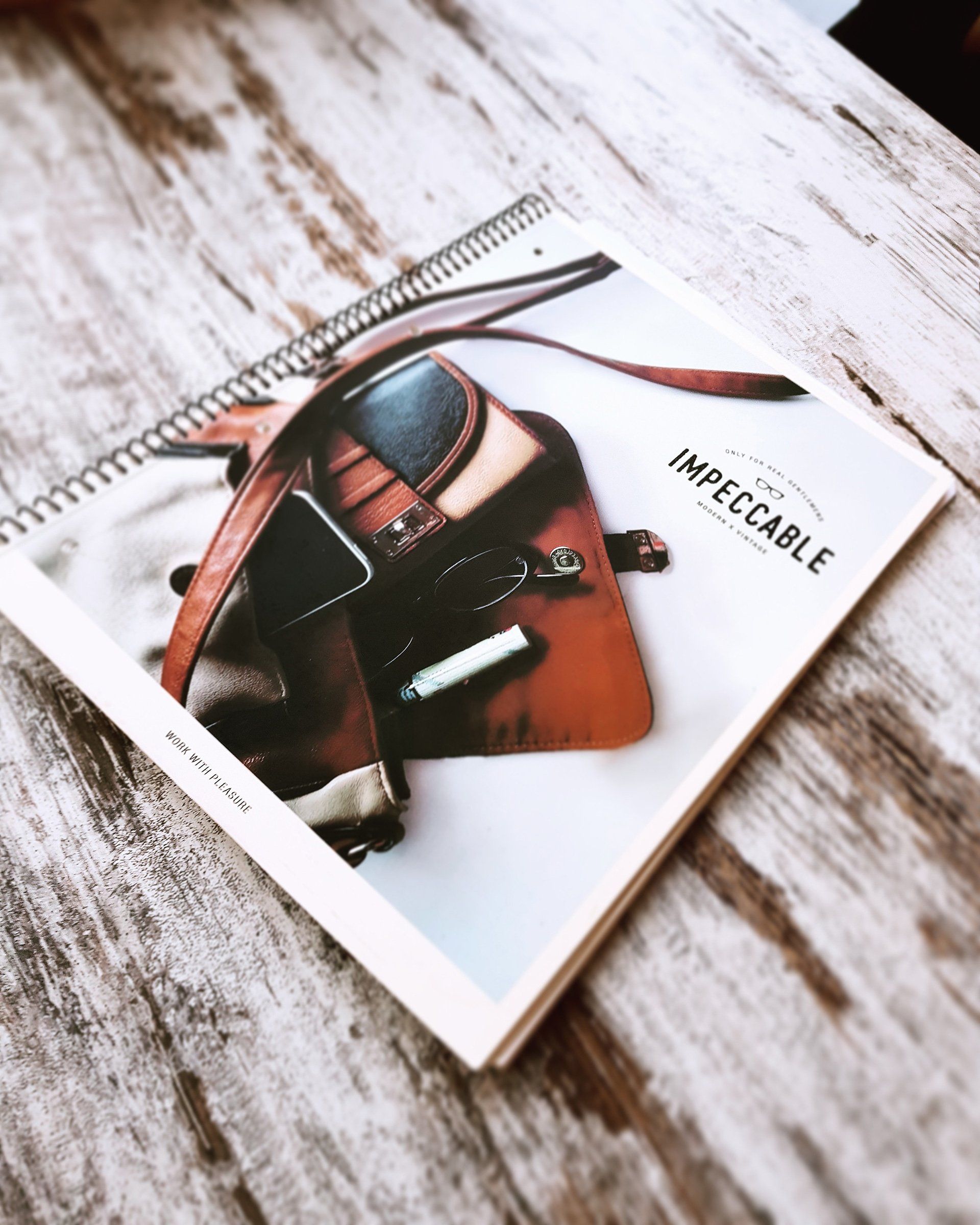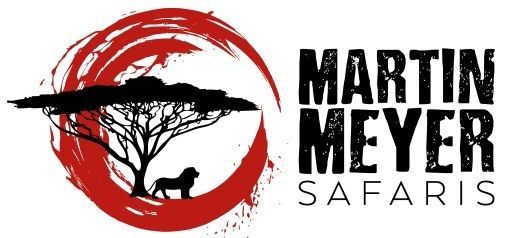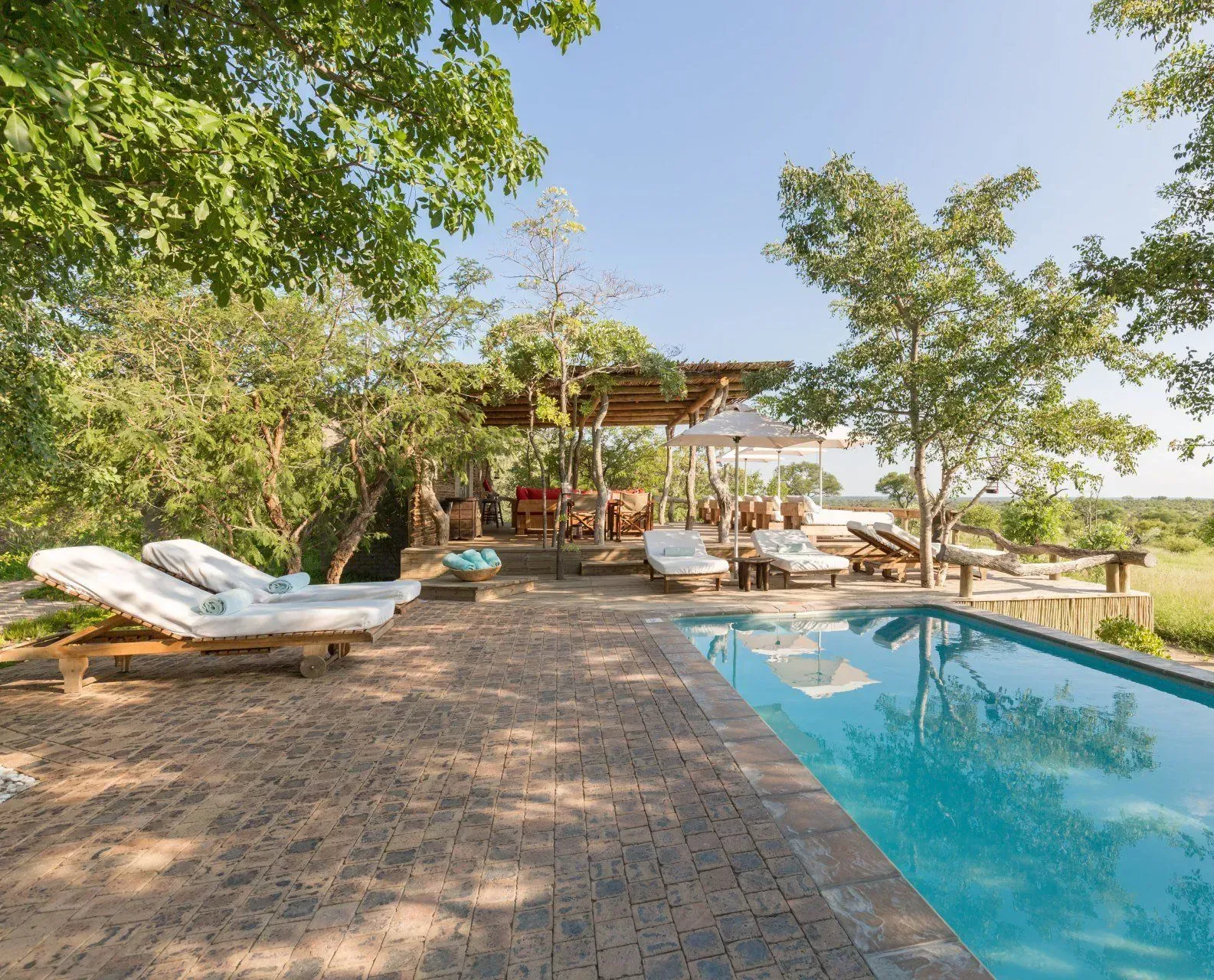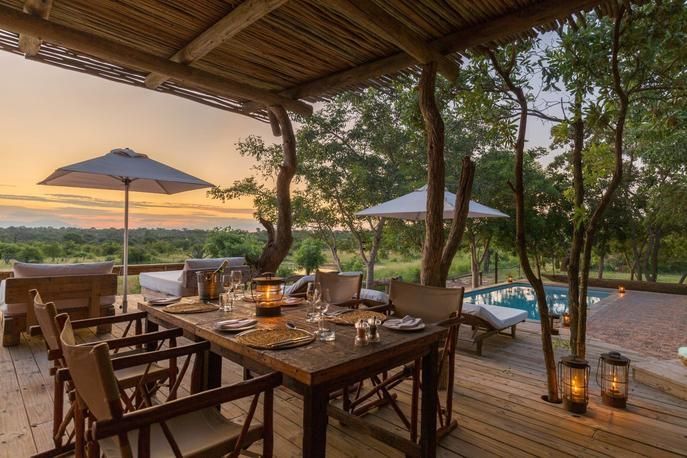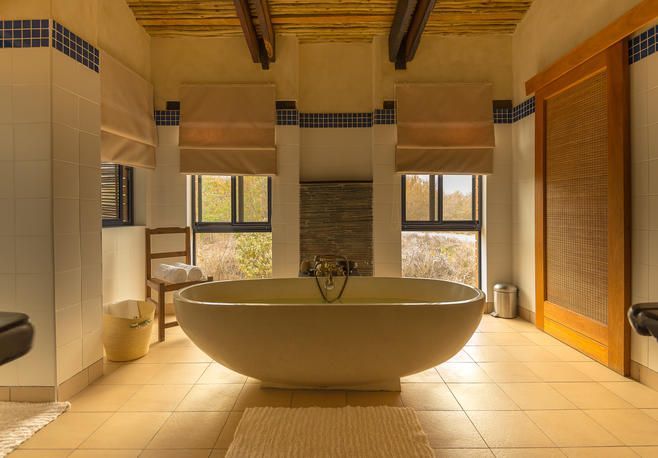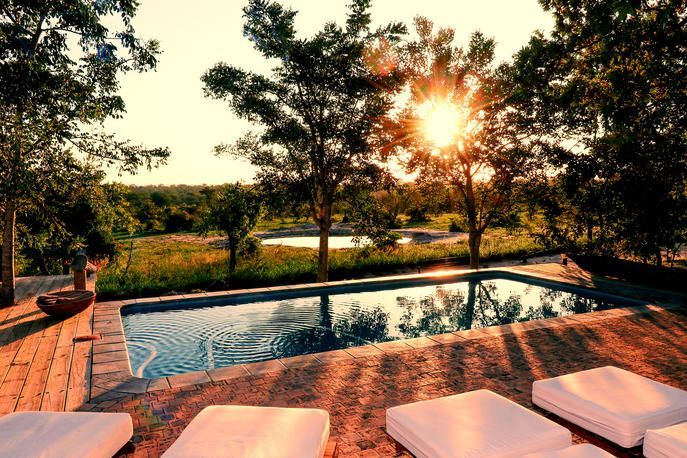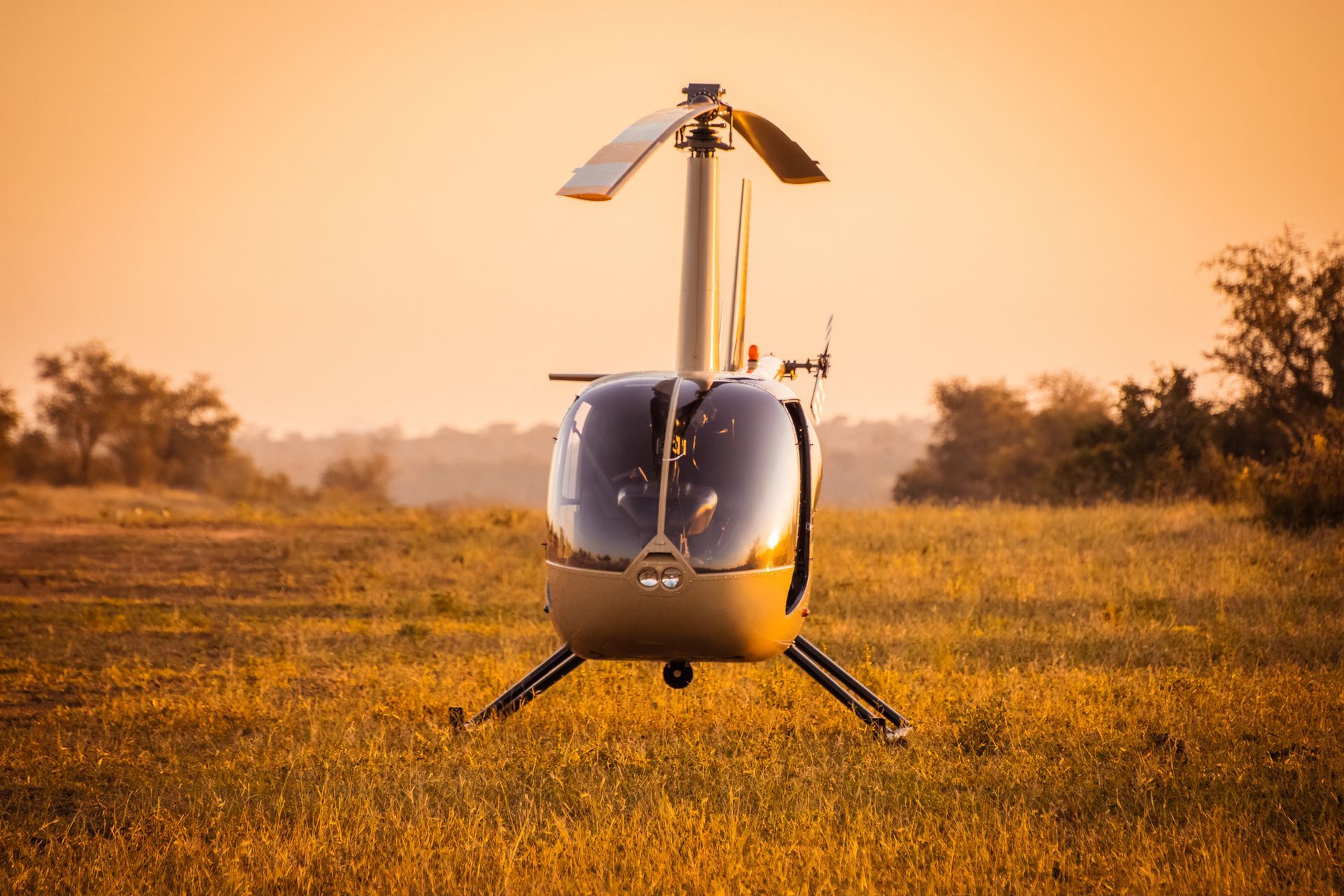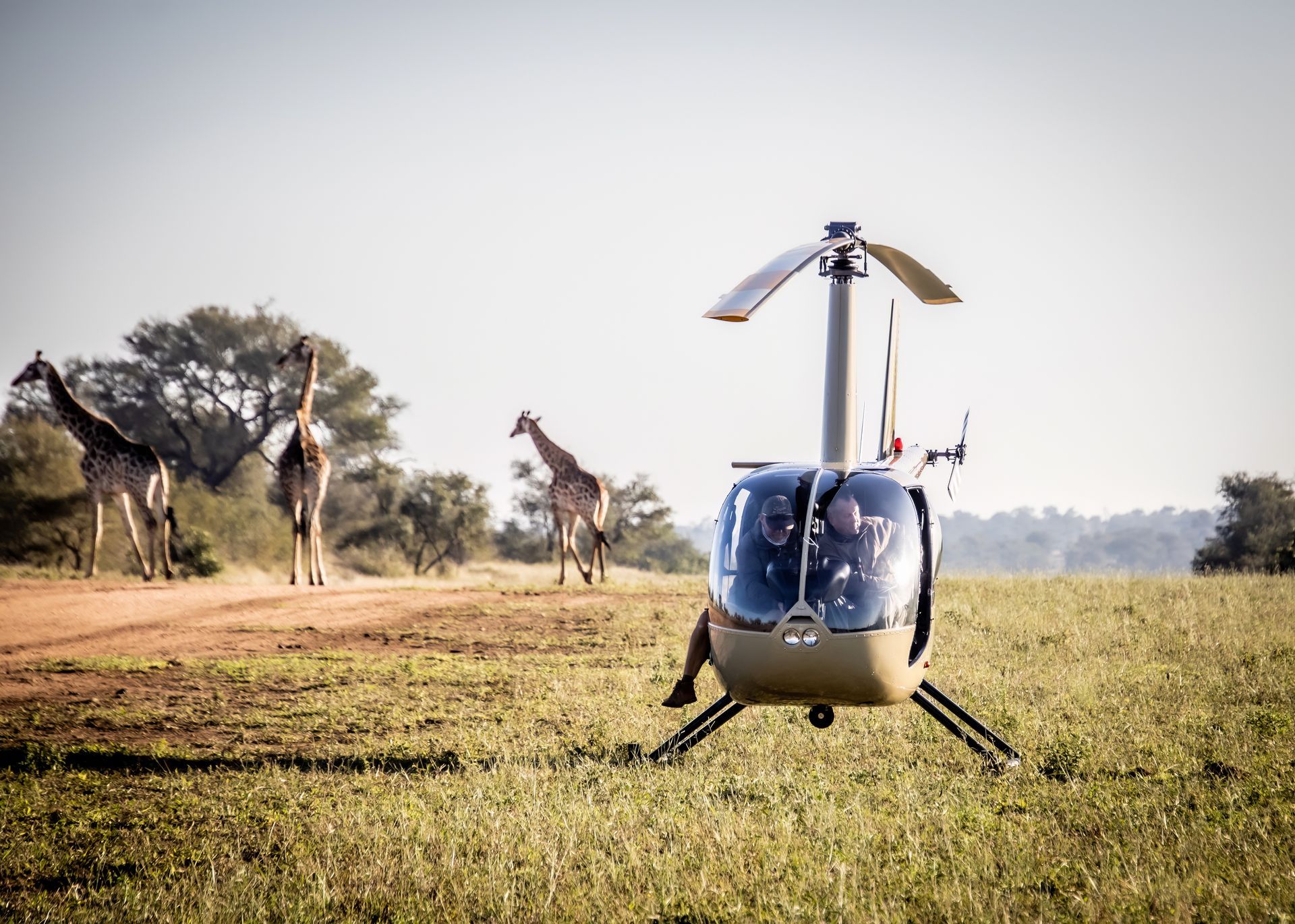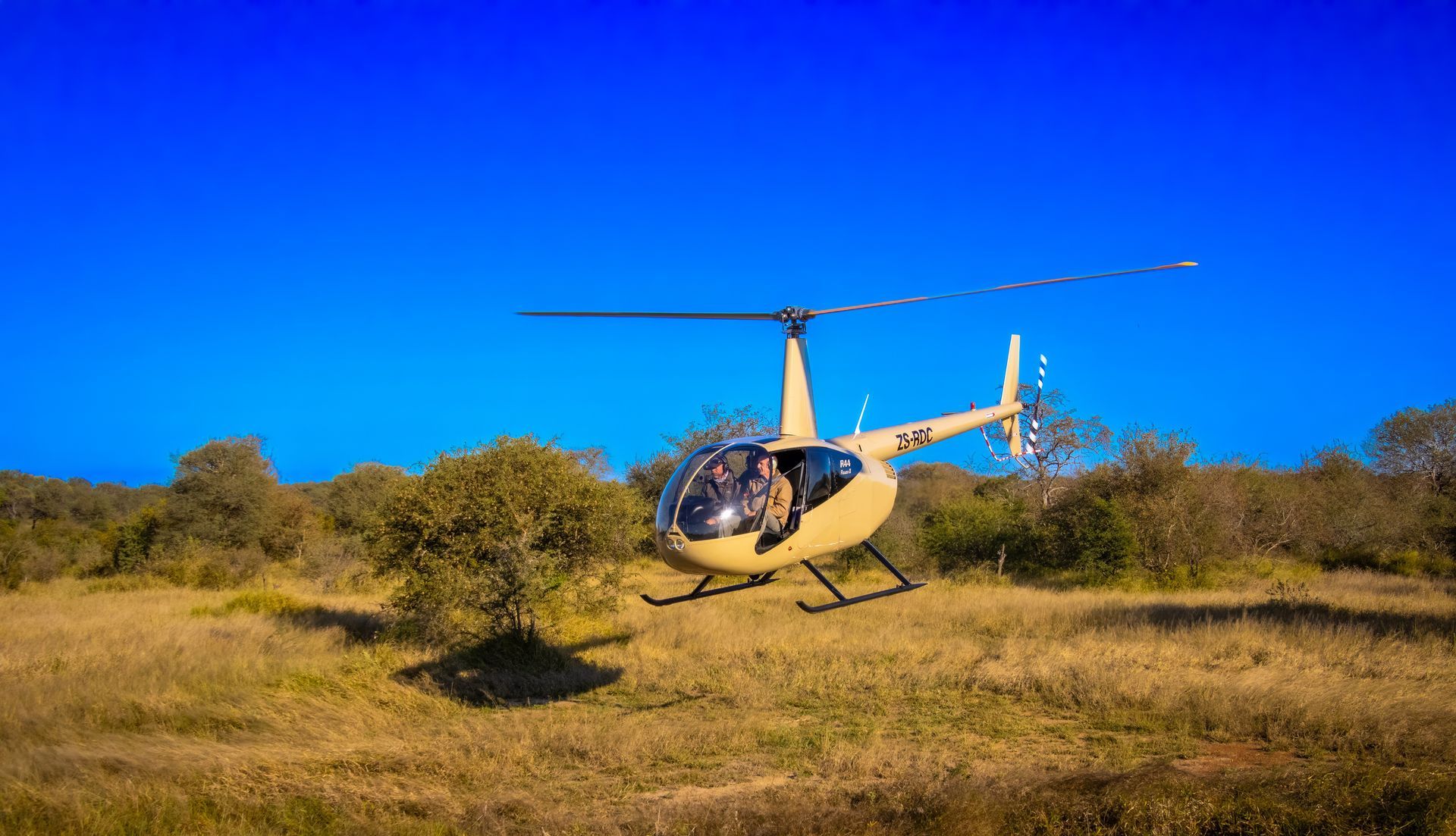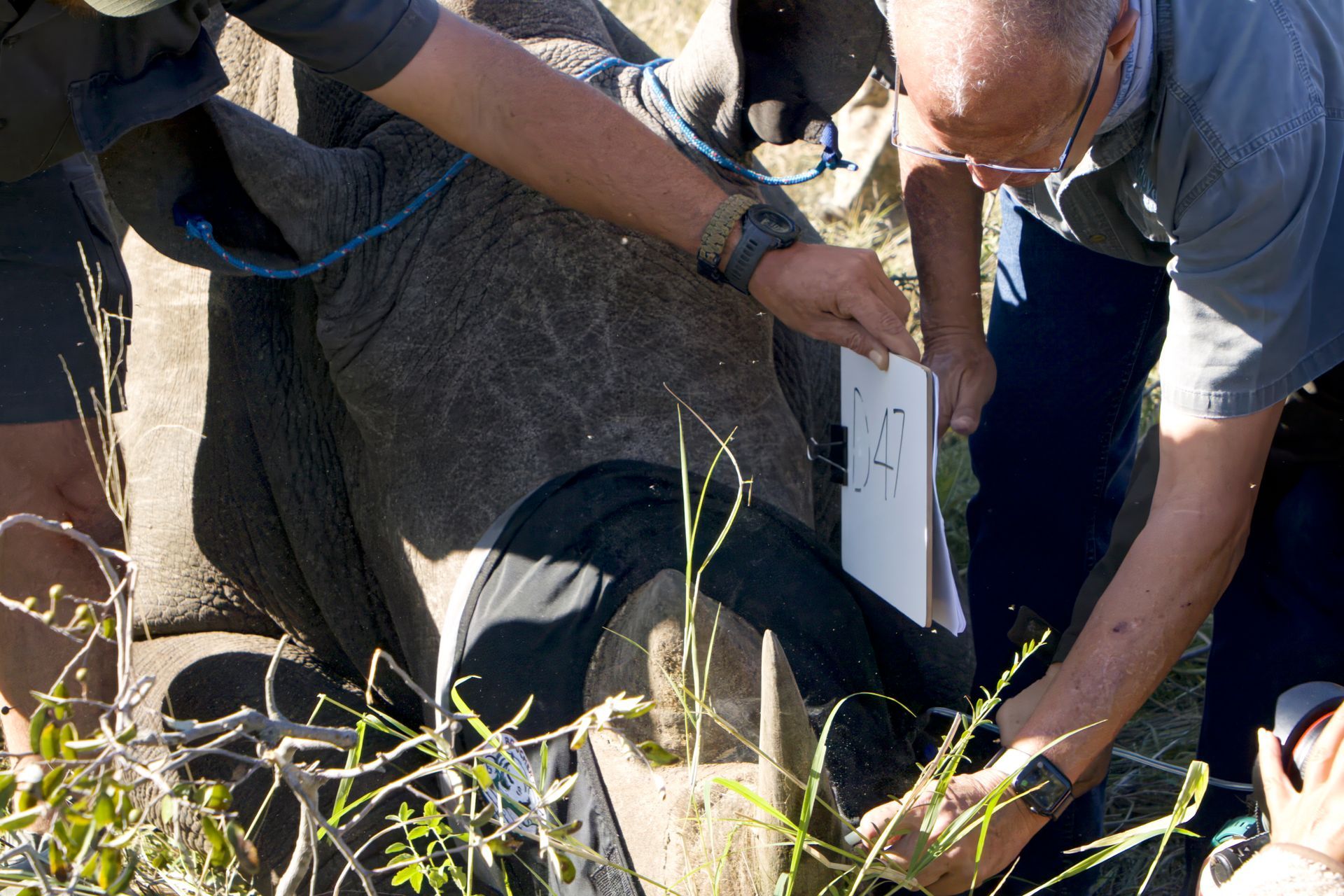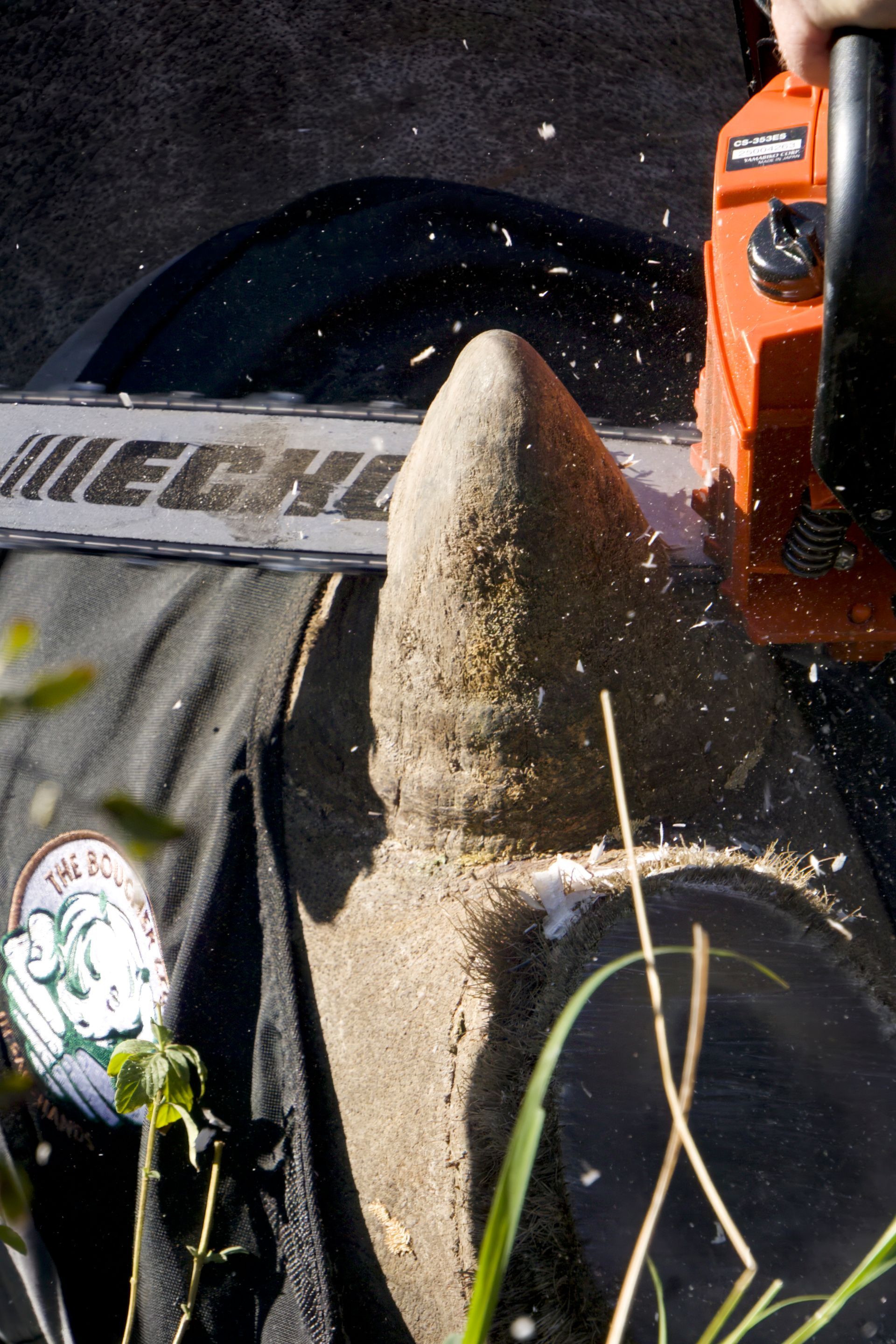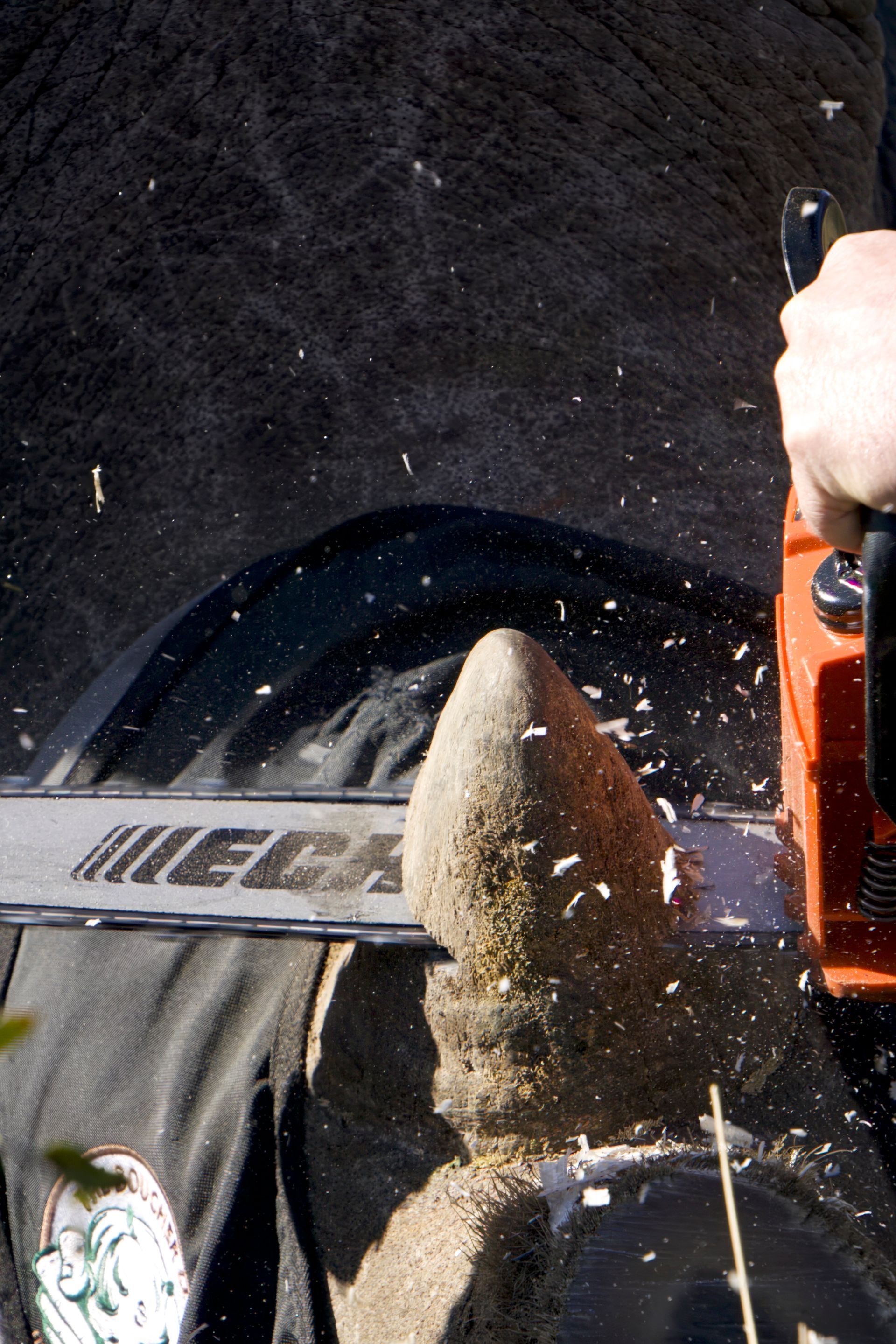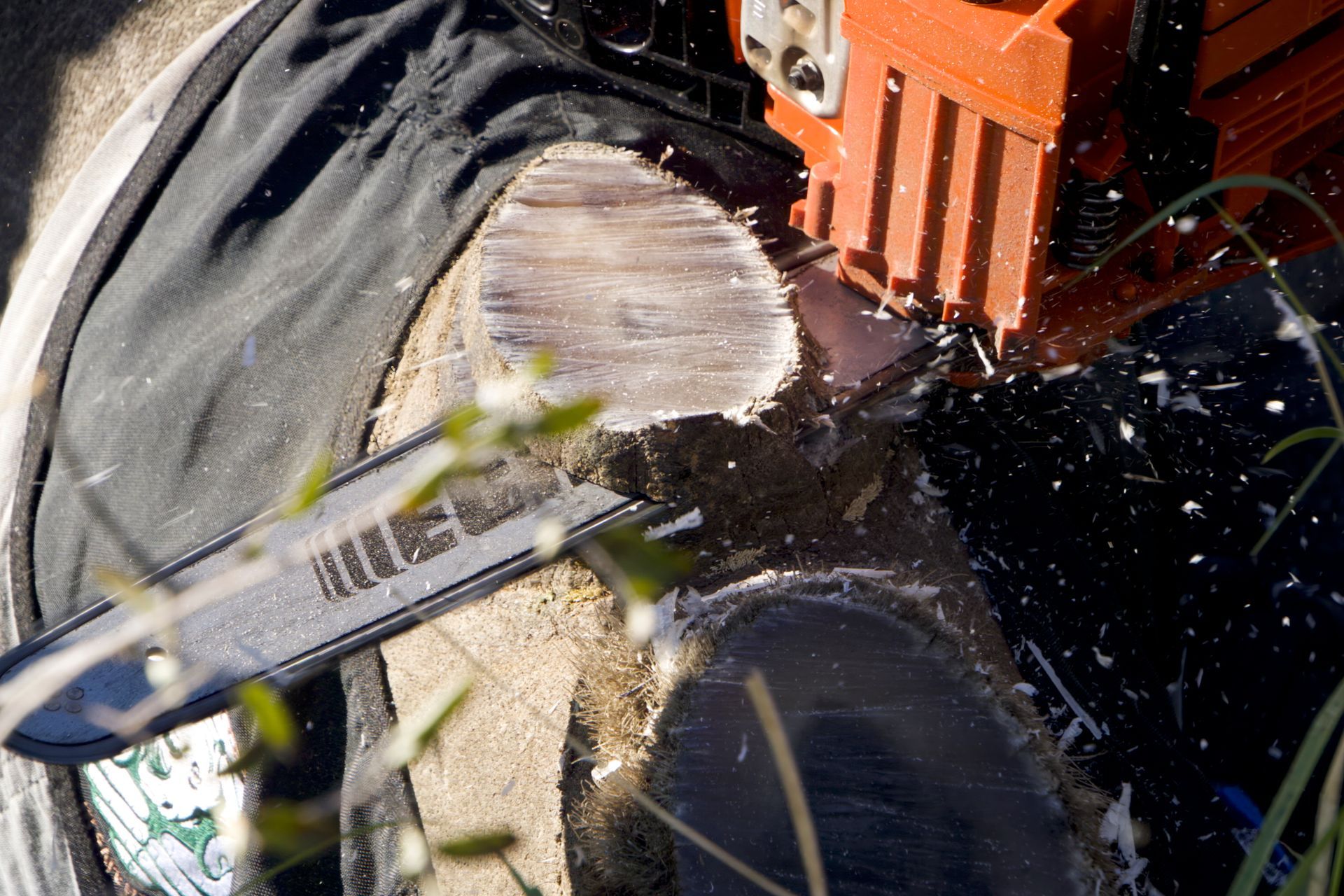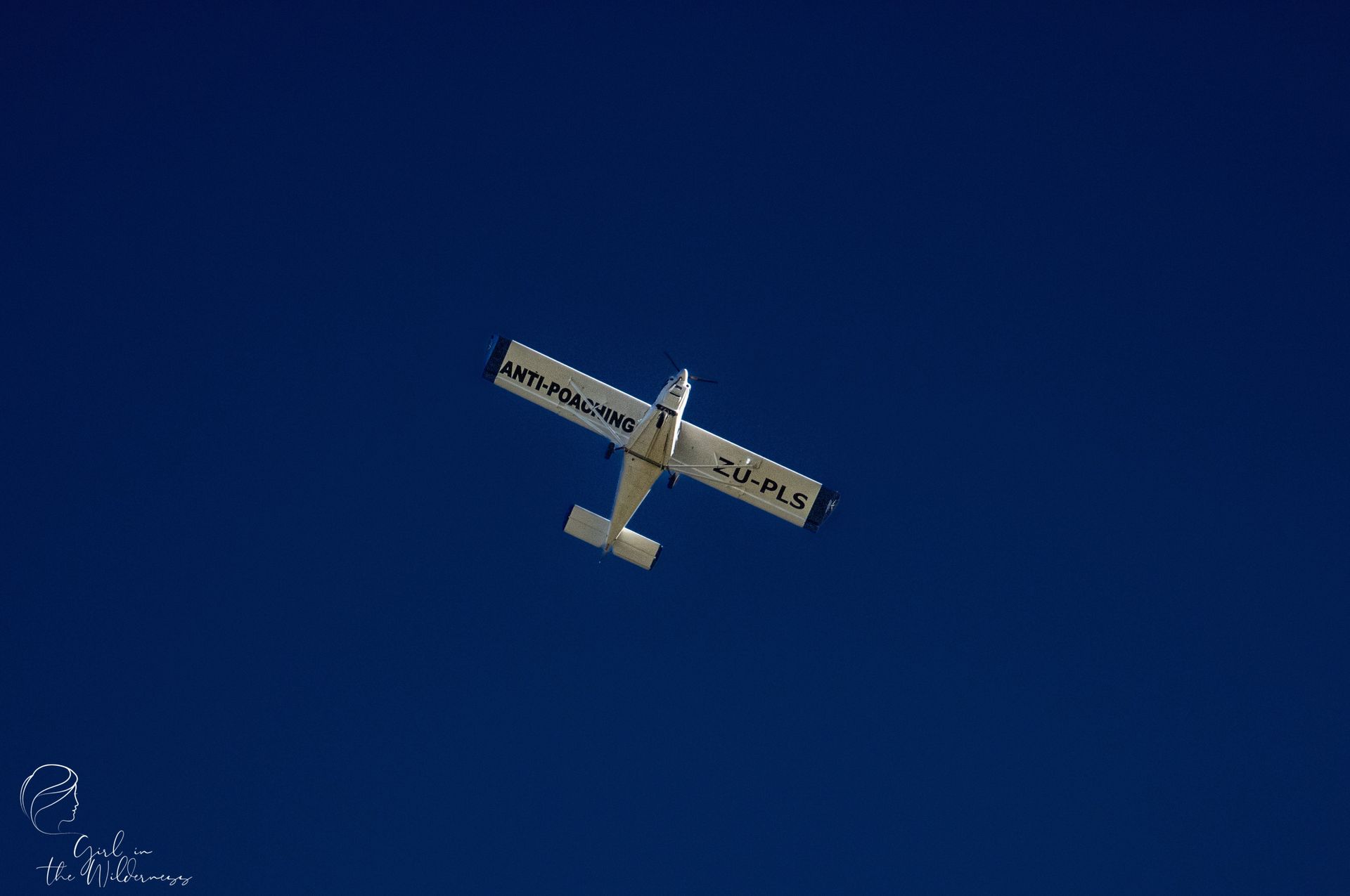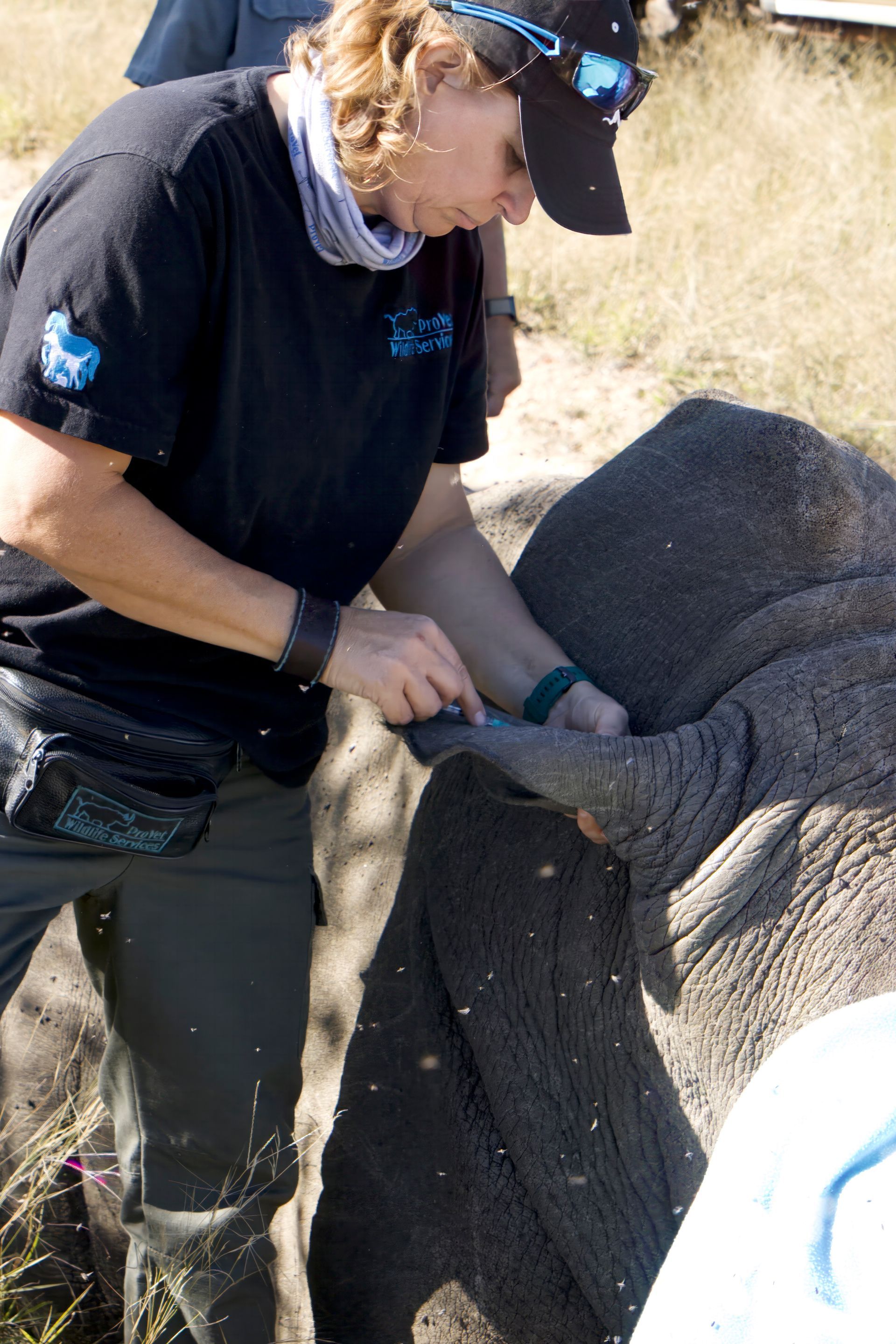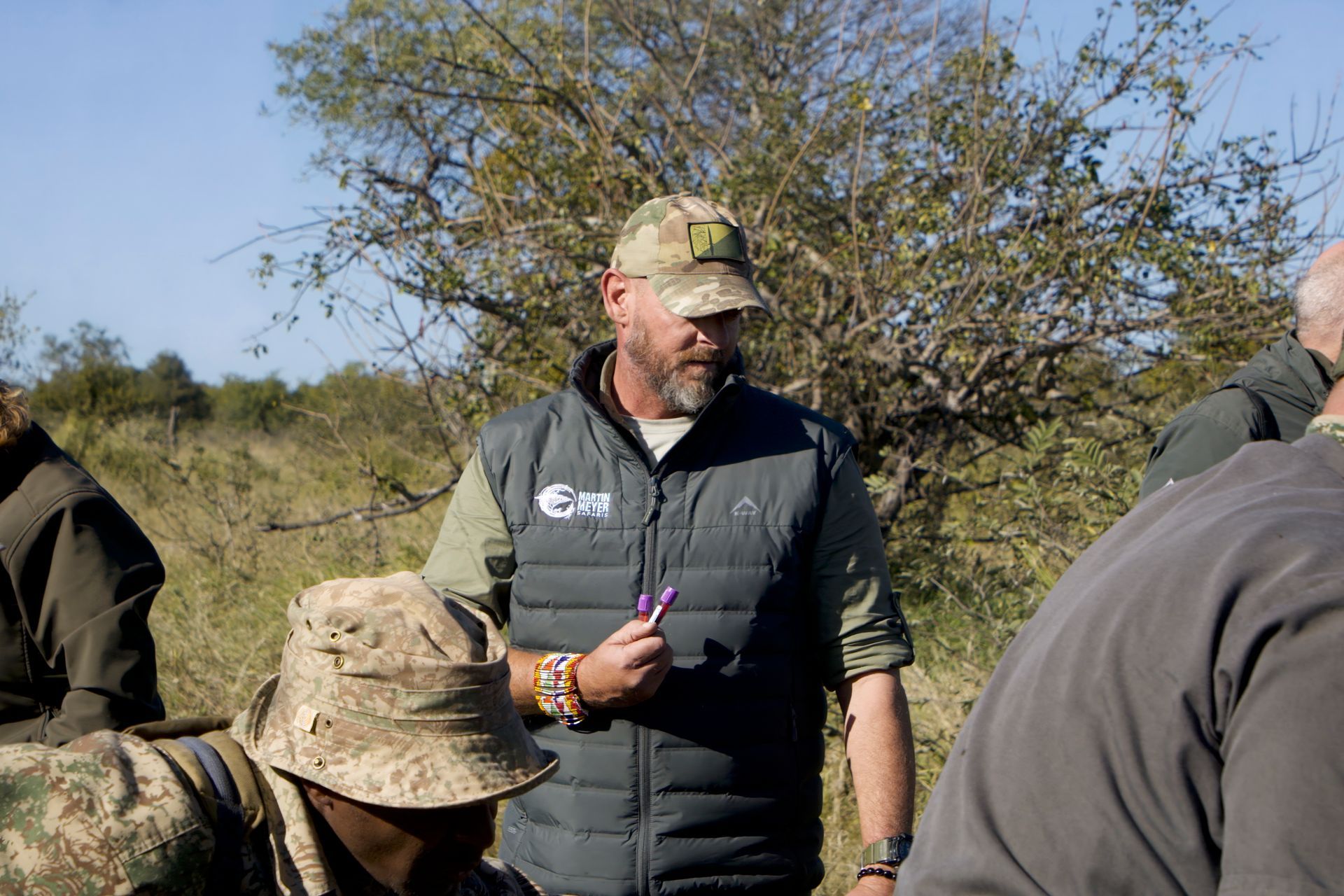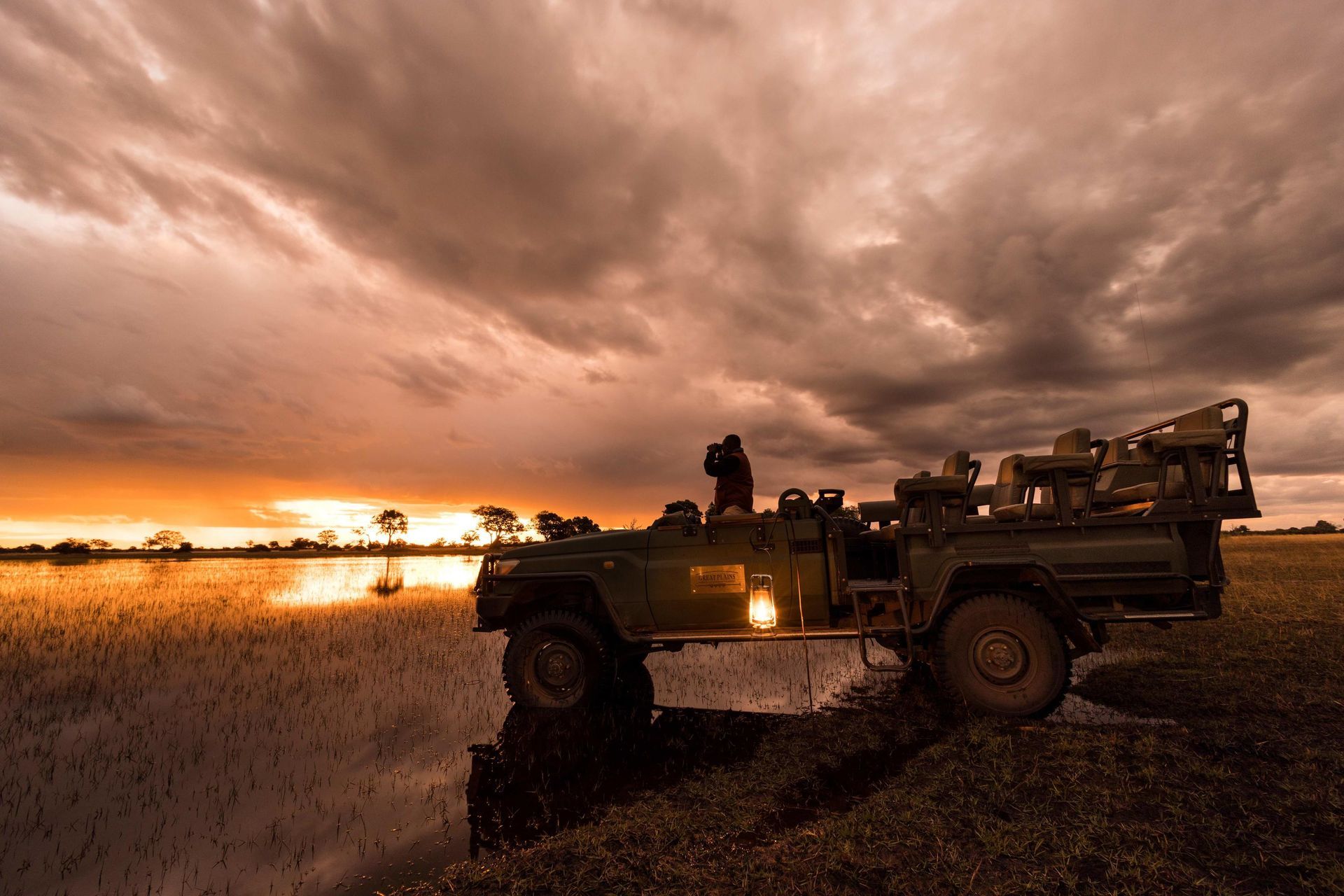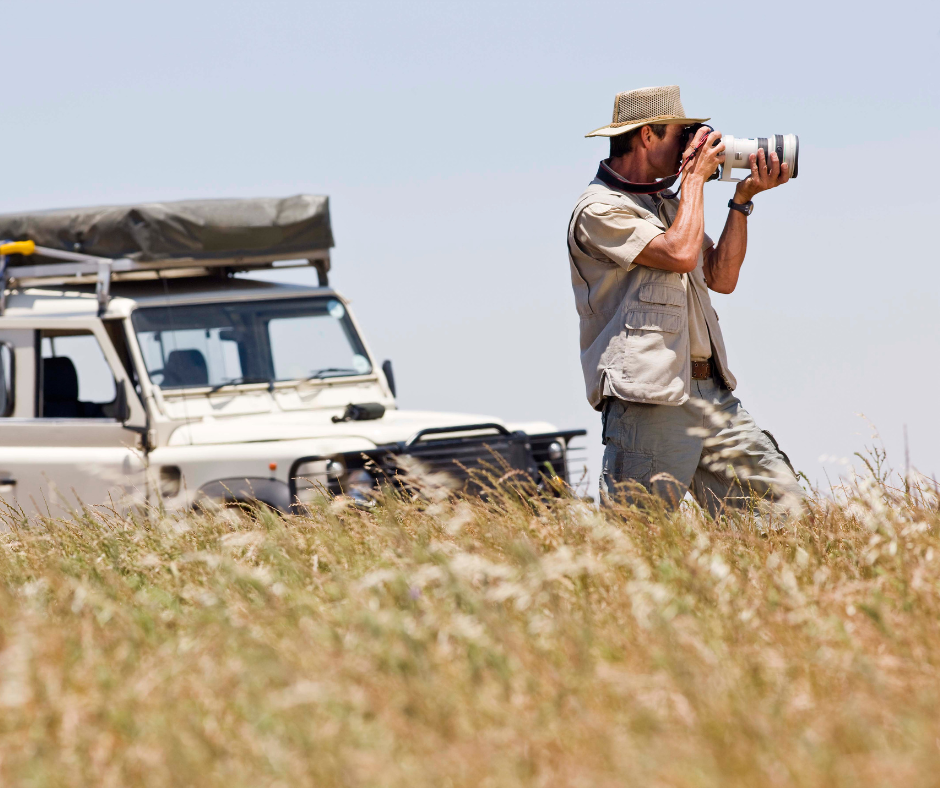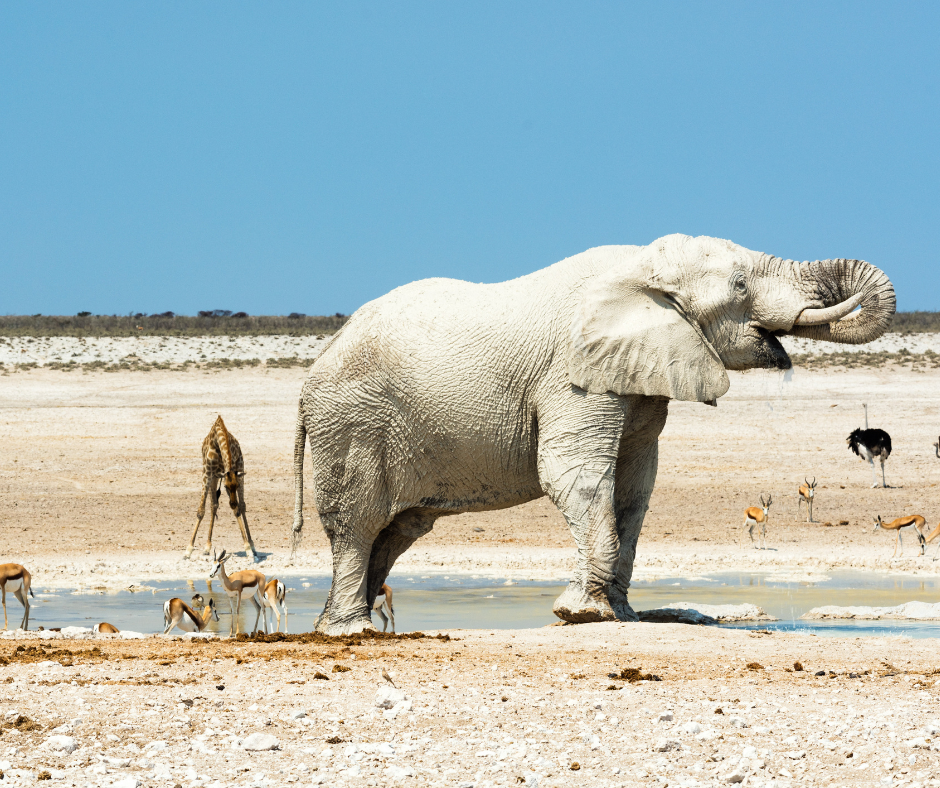Dehorning Rhino on a Conservation Safari
Rhino poaching is a serious issue that threatens the survival of the species. Despite efforts to combat it, poaching remains a major problem, driven by the demand for rhino horn in traditional medicines and as a status symbol. Dehorning, the process of removing a rhino's horns, has emerged as a controversial strategy in the fight against poaching. While it may seem drastic and even cruel, many experts argue that dehorning is a necessary evil to protect rhinos from poachers.
The logic behind dehorning is simple: if there are no horns to sell, there is no incentive for poachers to kill rhinos. Rhino horn has been estimated to be worth more than gold on the black market, making it a lucrative target for criminal syndicates. By removing the horns, rhinos become less valuable to poachers, reducing the risk of them being targeted.
This comes at a tremendous cost and we have decided to give our clients this unique and hands on experience to subsidise these costs, and allow you to get up close and personal with a true African Unicorn
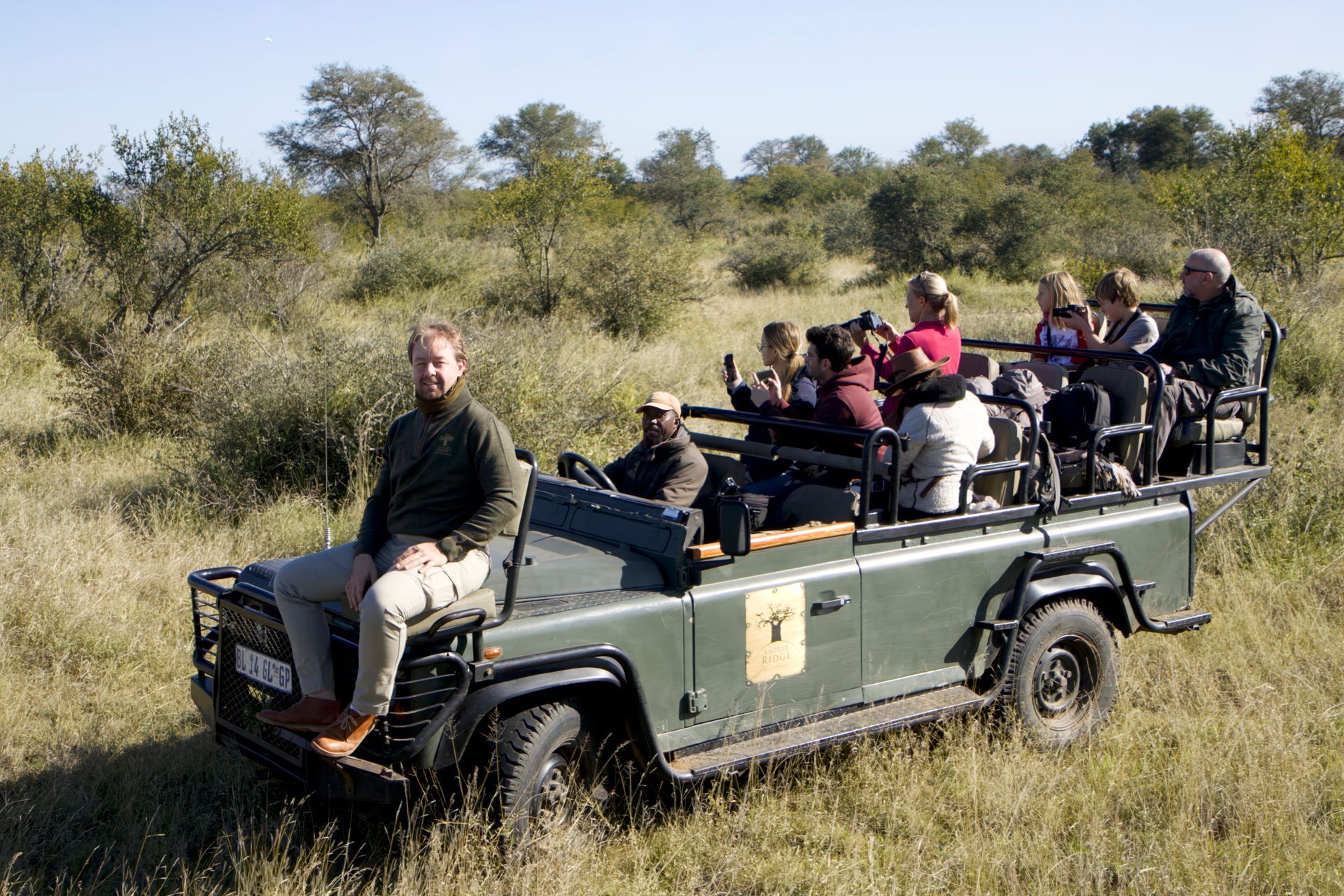
Key Takeaways
- Dehorning as a Protection Strategy
Dehorning rhinos helps deter poaching by removing the valuable horn that drives illegal trade—if there's nothing to sell, there's less incentive for poachers to kill these animals. - Guests Get Hands‑On Conservation Experience
Martin Meyer Safaris offers clients the rare opportunity to participate directly in a dehorning operation, making the experience both deeply educational and impactful. - Expert-Led, Safety-Focused Process
The dehorning team includes experienced pilots, veterinarians, reserve wardens, and anti-poaching unit members. Every operation follows strict safety protocols to ensure the welfare of both rhinos and participants. - Speed and Coordination Are Critical
The process—from immobilizing to reversing anesthesia—is executed with speed and precision to minimize stress on the rhino. Teams work together seamlessly to ensure the animal is safe, samples are taken, and the animal recovers quickly. - Transformative and Emotional Impact
Participants report a profound emotional response to the experience and a renewed sense of connection to wildlife conservation. Small actions—like dehorning two rhinos—can leave lasting impressions and inspire ongoing advocacy.
Recently, Martin and I were invited to take part in a Rhino dehorning in the Klaserie Private Nature Reserve, we excitedly packed our bags (and so much camera gear) and headed off to the charming Baobab Ridge Private Lodge in the Klaserie Private Nature Reserve. Living on the fringes of the Greater Kruger National Park, we are fortunate to be able to experience such conservation initiatives on an ongoing basis and we are only too happy to jump in and assist where we can, to protect not only Rhino but all animals that call this special place home. The Klaserie Private Nature Reserve spans an impressive 60 000 hectares and forms part of the Greater Kruger National Park – sharing unfenced boundaries with several reserves.
Post-pandemic, as we see our own guest arrival numbers soar, we are asked on a weekly basis, how can our guests get involved and how it all works. To explain this concisely, we first need to look at the bigger picture and look at why dehorning rhino is only a small part of the larger conservation exercise.
Over the past few years, Rhino poaching has increased tenfold, with numbers plummeting and the threat of extinction becoming very real. Reserves must utilize all means available to them to preserve these animals, considering both proactive and preventative measures. For dehorning to be effective, reserves must combine the dehorning with extensive security measures, highly trained anti-poaching units, and state-of-the-art monitoring systems. While we cannot go into too much detail on the day-to-day security measures on a public platform for obvious reasons, it is vital to understand the massive costs associated with keeping our rhinos safe, and while helpful, dehorning is not the only tool in the toolkit we need to consider.
There is so much debate and white noise on public platforms, regarding the long-term effects of dehorning, and whether rhinos need their horns to survive on a day-to-day basis. I am not going to go into this debate, but rather look at the experience from the ground.
We arrived at Baobab Ridge, where we were welcomed warmly by all the staff as we proceeded with signing indemnity forms and the lodge orientation. Our room for the night, was their beautiful 2-bedroom family suite, with sweeping views of the surrounding bushveld. Enjoying an early bushveld dinner with Nini and Wolfgang, the owners of the lodge we tucked ourselves into our plush bed in preparation for the very early start the next morning.
Before first light, we were bundled in our warmest winter clothes and on the back of the open game drive vehicle to the airstrip, the central meeting point for the day's operation. (Typically this type of conservation work takes place in the cooler winter months to minimize the stress on the animals and to avoid things like dehydration and heat-stroke in the animals) The atmosphere on the vehicle was electric, people were talking excitedly amongst themselves, and excited for the morning ahead.
As we stopped at the airstrip, we were welcomed by Colin Rowles, the Reserve Warden, members of the reserves Anti-Poaching unit, Doc Peter Rodgers, Doc Hamish Curry, and Janelle Goodrich from Pro-Vet, a local veterinary practice in Hoedspruit.
As we were disembarking the vehicle, we heard the distinctive “whop-whop-whop” sounds of the helicopter approaching, as the sun was just breaching the horizon, followed shortly after by the arrival of the indomitable Gerry McDonald, chopper pilot extraordinaire and conservation warrior.
Having worked extensively with Doc Pete, Janelle, and Gerry – Martin just grinned at me, and we knew then that today was going to be a good day for conservation.
We had an extensive safety and security briefing, which is vital in a carefully planned operation such as this. Each person has a role to play during a dehorning, and this is all an integral part of the authentic experience, this is not an excursion where one watches from the sidelines, but rather one where you roll your sleeves up and get stuck in with the hard work. So people must know what to expect, what the process is from start to finish, and what potential roadblocks one can encounter on the ground. Doc Pete details the medications used to immobilize and reverse, as well as the tissue and blood samples harvested from each individual, and why this is vital in the ongoing fight against poaching.
While the briefing was underway, we heard the far distant drone of a Cessna, flying grids across the reserve, Gerry’s twin brother, Bruce had arrived and was already trying to locate the Rhino that were to feature on today's agenda. To watch Gerry and Bruce fly in tandem is quite honestly poetry in motion. They are experts in their field, and seeing the perfect Synchronicity between brothers as they take to the skies is truly a sight to behold.
Shortly after the briefing, Gerry, Doc Pete, and Colin climbed into the chopper to assist Bruce in locating the first Rhino. This is the process that takes the longest, these two expert pilots were searching a +27 11 083 5940 hectare reserve for suitable candidates that had either not been dehorned previously, or that had been dehorned and had sufficient regrowth to warrant another dehorning. When the first rhino is spotted the Ground to Air radio informs you in which area the rhinos are to be darted, and slowly you start making your way to that area of the reserve. Waiting patiently while the rhino is darted by the Vet before moving in to assist.
Once the call is in that the dart has taken hold successfully, it is all hands on deck, as you navigate through the bushveld to where the Rhino is likely to go down, as soon as the Rhino goes down, his eyes are covered and ear plugs are inserted. Now, as an aside, big bull rhinos can easily weigh over 2 tonnes, with some of the largest bulls clocking in over 3 ½ tonnes. These are big animals, big wild animals, that don’t necessarily end up where you want them to be when they are immobilized. As was the case with our first rhino, this big cow chose her temporary resting place with her head firmly hidden in a thicket – no matter for these seasoned pro’s as they made quick work of removing the smaller trees that were impeding access to the horn. Once this was done, it was the work of the entire team, to move this magnificent creature into a more favorable position, and essentially protect her legs during the process. When a Rhino has been immobilized, it can land in an awkward position, which could lead to blood loss in a leg (remember the weight of a rhino and liken it to your foot going to sleep and getting pins and needles) every single person there was called into action as we rocked, shifted and moved her into a position that would allow the vets and seasoned pro’s the best access to her horn.
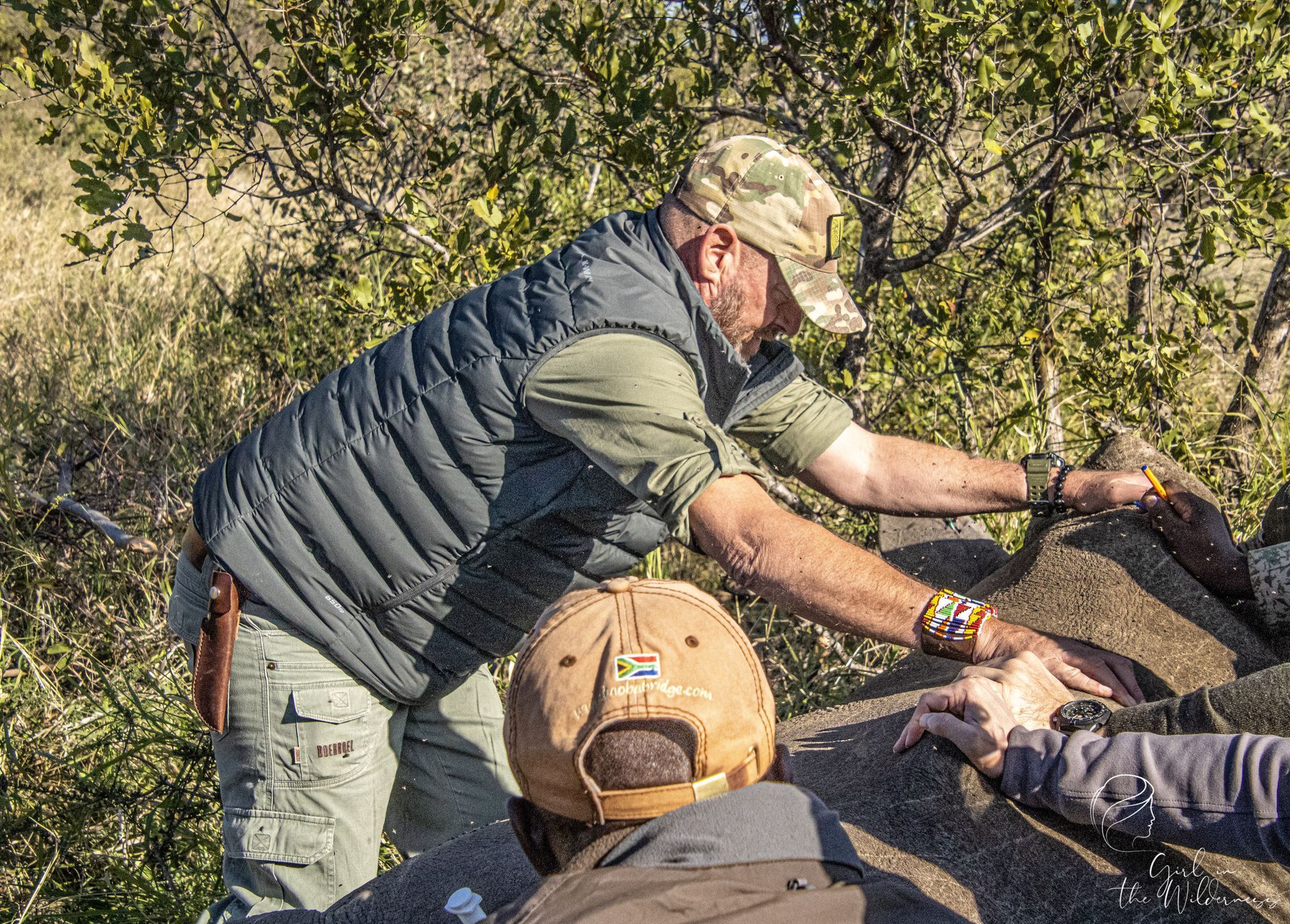
The entire process, from when your feet touch the ground, till the reversal drug is administered is fast, the less time the animal spends immobilized the better. Before you have even blinked, the Rhino is on oxygen, DNA and blood samples are taken, eye drops are administered and the horn is removed. These teams work in absolute synergy for the well-being of the animal, and time is critical. This is where the importance of the briefing comes into play, and should you ever have the privilege to be a part of any conservation experience, my advice to you is to listen, and ask questions. These stalwarts that dedicate their lives to the protection of all animals, are only too happy to share their wealth of knowledge and information with you.
Once the horn was removed, the necessary samples collected and the oxygen tube removed, we are barrelled onto the waiting vehicles again, as Doc Pete administered the reversal drug, and within a matter of seconds, the cow was reunited with her young, on her feet and ambling off into the bush – somewhat surprised by the vehicles around her, as if to say “Hey where did you all come from” but essentially no worse for wear, and potentially safer from a poachers rifle than she was 15 minutes prior.
While those of us with our feet firmly on the ground were busy with serious Rhino things, Bruce our ever-diligent Cessna Pilot had been searching for the next rhino. Barely 10 minutes after the cow and calf had taken their leave of us, Gerry, Doc Pete, and Colin were in the air again, a previously dehorned rhino bull had been located, who had enough regrowth on his horn for him to be a suitable candidate for our next dehorning. The Vehicle convoy made our way to the general location of the bull and shortly after it was announced that he was successfully darted, and the ground team could come in. I mentioned earlier the skill with which Gerry pilots his chopper, however again I was left in absolute awe as Gerry had essentially herded this magnificent bull into the middle of one of the reserve roads, giving the entire team perfect access to the rhino, and his horn.
The bull also went down perfectly, so no back-breaking three-tonne readjustments were required. As before the whole team sprang into action and the entire process was over much faster than I had expected.
While I have been involved in numerous conservation initiatives over the past couple of years mainly with large carnivores, this was the first time I had ever been a part of a dehorning crew and there are a few things that stand out for me. The first was that on the short drive back to the lodge, the vehicle was quiet, a stark contrast to the loud chatter at the start of the experience. We had all been a part of such a momentous project, that we were each quietly processing the morning in our own way. The entire experience was very sensory and tactile. From being so close to such a rare and endangered animal out in the wild to the sound of the Chainsaw as it is started up with the smell of gasoline lingering on the wind, and the sight of tiny pieces of rhino-horn flying into the air as the chainsaw makes contact for the first time until the moment that the horn breaks free.
I took a moment to myself during the entire experience to just stand back and observe the people around me, and the resounding takeaway was a connectedness to nature that we lose in our day-to-day lives. We run around being dictated to by man-made schedules that we quite literally forget to stop and take in our surroundings.
We need a primal experience like this at least once in our lives that we can revisit in our memory banks that reminds us that we are all part of a bigger picture and that there is a place in the world for good deeds, no matter how big or how small the contribution or effort, it all adds up. We dehorned two Rhino on a Friday morning in the Klaserie, many people will argue it's only two Rhino, but the experience for every person on the ground on that cold winter's morning changed them in some way. They have all gone home with photos, memories and a first hand account of their own experience, and they will continue to share and talk about it for as long as they live. The retelling of these individual stories is as important as the effort and hard work it took on the day, it ensures the longevity of a species and the hope that we will all continue to fight for all the threatened wildlife on our planet.
Do you want to get actively involved with Conservation ? Reach out to us below and one of our team will contact you to discuss your involvement.
Contact Us
Have you always dreamed of going on safari but don't know where to start ?
We offer a complimentary 1 hour safari consultation call to simplify the process.

